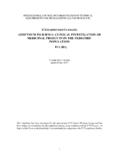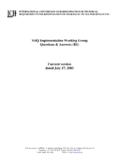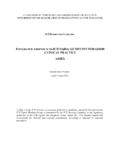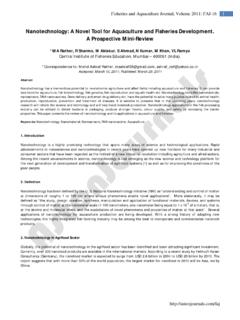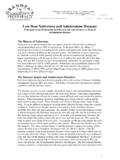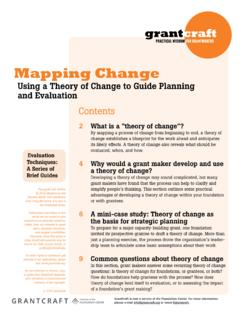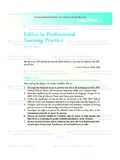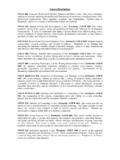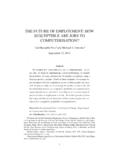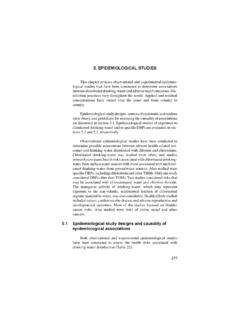Transcription of DOSE-RESPONSE INFORMATION TO SUPPORT …
1 INTERNATIONAL CONFERENCE ON HARMONISATION OF TECHNICAL. REQUIREMENTS FOR registration OF PHARMACEUTICALS FOR HUMAN. USE. ICH HARMONISED TRIPARTITE GUIDELINE. DOSE-RESPONSE INFORMATION . TO SUPPORT drug registration . E4. Current Step 4 version dated 10 March 1994. This Guideline has been developed by the appropriate ICH Expert Working Group and has been subject to consultation by the regulatory parties, in accordance with the ICH. Process. At Step 4 of the Process the final draft is recommended for adoption to the regulatory bodies of the European Union, Japan and USA. E4. Document History New First Codification History Date Codification November 2005. E4 Approval by the Steering Committee under Step 2 10 E4. and release for public consultation. March 1993. Current Step 4 version E4 Approval by the Steering Committee under Step 4 and 10 E4.
2 Recommendation for adoption to the three ICH March regulatory bodies. 1994. DOSE-RESPONSE INFORMATION TO SUPPORT drug registration . ICH Harmonised Tripartite Guideline Having reached Step 4 of the ICH Process at the ICH Steering Committee meeting on 10 March 1994, this guideline is recommended for adoption to the three regulatory parties to ICH. TABLE OF CONTENTS. I. INTRODUCTION ..1. Purpose of DOSE-RESPONSE Use of DOSE-RESPONSE INFORMATION in Choosing Uses of Concentration- response Data ..2. Problems with Titration Interactions between DOSE-RESPONSE and Time ..3. II. OBTAINING DOSE-RESPONSE INFORMATION ..3. DOSE-RESPONSE Assessment Should Be an Integral Part of drug Development ..3. Studies in Life-Threatening Diseases ..3. Regulatory Considerations When DOSE-RESPONSE Data Are Imperfect ..4. Examining the Entire Database for DOSE-RESPONSE III.
3 STUDY DESIGNS FOR ASSESSING DOSE-RESPONSE ..5. Specific Trial Designs ..6. 1. Parallel 2. Cross-over DOSE-RESPONSE ..7. 3. Forced 4. Optional titration (placebo-controlled titration to end-point)..8. IV. GUIDANCE AND ADVICE ..9. i DOSE-RESPONSE INFORMATION . TO SUPPORT drug registration . I. INTRODUCTION. Purpose of DOSE-RESPONSE INFORMATION Knowledge of the relationships among dose , drug -concentration in blood, and clinical response (effectiveness and undesirable effects) is important for the safe and effective use of drugs in individual patients. This INFORMATION can help identify an appropriate starting dose , the best way to adjust dosage to the needs of a particular patient, and a dose beyond which increases would be unlikely to provide added benefit or would produce unacceptable side effects. dose -concentration, concentration- and/or dose - response INFORMATION is used to prepare dosage and administration instructions in product labeling.
4 In addition, knowledge of DOSE-RESPONSE may provide an economical approach to global drug development, by enabling multiple regulatory agencies to make approval decisions from a common database. Historically, drugs have often been initially marketed at what were later recognized as excessive doses ( , doses well onto the plateau of the DOSE-RESPONSE curve for the desired effect), sometimes with adverse consequences ( hypokalemia and other metabolic disturbances with thiazide-type diuretics in hypertension). This situation has been improved by attempts to find the smallest dose with a discernible useful effect or a maximum dose beyond which no further beneficial effects is seen, but practical study designs do not exist to allow for precise determination of these doses. Further, expanding knowledge indicates that the concepts of minimum effective dose and maximum useful dose do not adequately account for individual differences and do not allow a comparison, at various doses, of both beneficial and undesirable effects.
5 Any given dose provides a mixture of desirable and undesirable effects, with no single dose necessarily optimal for all patients. Use of DOSE-RESPONSE INFORMATION in Choosing Doses What is most helpful in choosing the starting dose of a drug is knowing the shape and location of the population (group) average DOSE-RESPONSE curve for both desirable and undesirable effects. Selection of dose is best based on that INFORMATION , together with a judgement about the relative importance of desirable and undesirable effects. For example, a relatively high starting dose (on or near the plateau of the effectiveness DOSE-RESPONSE curve) might be recommended for a drug with a large demonstrated separation between its useful and undesirable dose ranges or where a rapidly evolving disease process demands rapid effective intervention. A high starting dose , however, might be a poor choice for a drug with a small demonstrated separation between its useful and undesirable dose ranges.
6 In these cases, the recommended starting dose might best be a low dose exhibiting a clinically important effect in even a fraction of the patient population, with the intent to titrate the dose upwards as long as the drug is well-tolerated. Choice of a starting dose might also be affected by potential intersubject variability in pharmacodynamic response to a given blood concentration level, or by anticipated intersubject pharmacokinetic differences, such as could arise from non-linear kinetics, metabolic polymorphism, or a high potential for pharmacokinetic drug - drug interactions. In these cases, a lower starting dose would protect patients who obtain higher blood concentrations. It is entirely possible that different physicians and even different regulatory authorities would, looking at the same data, make different choices as to the appropriate starting doses, dose titration 1.
7 DOSE-RESPONSE INFORMATION to SUPPORT drug registration steps, and maximum recommended dose , based on different perceptions of risk/benefit relationships. Valid DOSE-RESPONSE data allow the use of such judgement. In adjusting the dose in an individual patient after observing the response to an initial dose , what would be most helpful is knowledge of the shape of individual dose - response curves, which is usually not the same as the population (group) average DOSE-RESPONSE curve. Study designs that allow estimation of individual DOSE-RESPONSE curves could therefore be useful in guiding titration, although experience with such designs and their analysis is very limited. In utilizing DOSE-RESPONSE INFORMATION , it is important to identify, to the extent possible, factors that lead to differences in pharmacokinetics of drugs among individuals, including demographic factors ( age, gender, race), other diseases ( renal or hepatic failure), diet, concurrent therapies, or individual characteristics ( weight, body habitus, other drugs, metabolic differences).
8 Uses of Concentration- response Data Where a drug can be safely and effectively given only with blood concentration monitoring, the value of concentration- response INFORMATION is obvious. In other cases, an established concentration- response relationship is often not needed, but may be useful for ascertaining the magnitude of the clinical consequences of 1). pharmacokinetic differences, such as those due to drug -disease ( renal failure) or drug - drug interactions, or 2) for assessing the effects of the altered pharmacokinetics of new dosage forms ( controlled release formulation) or new dosage regimens without need for additional clinical data, where such assessment is permitted by regional regulations. Prospective randomized concentration- response studies are critical to defining concentration monitoring therapeutic windows but are also useful when pharmacokinetic variability among patients is great; in that case, a concentration response relationship may in principle be discerned in a prospective study with a smaller number of subjects than could the dose response relationship in a standard DOSE-RESPONSE study.
9 Note that collection of concentration- response INFORMATION does not imply that therapeutic blood level monitoring will be needed to administer the drug properly. Concentration- response relationships can be translated into DOSE-RESPONSE INFORMATION . Alternatively, if the relationships between concentration and observed effects ( , an undesirable or desirable pharmacologic effect) are defined, patient response can be titrated without the need for further blood level monitoring. Concentration- response INFORMATION can also allow selection of doses (based on the range of concentrations they will achieve) most likely to lead to a satisfactory response . Problems with Titration Designs A study design widely used to demonstrate effectiveness utilizes dose titration to some effectiveness or safety endpoint. Such titration designs, without careful analysis, are usually not informative about DOSE-RESPONSE relationships.
10 In many studies there is a tendency to spontaneous improvement over time that is not easily distinguishable from an increased response to higher doses or cumulative drug exposure. This leads to a tendency to choose, as a recommended dose , the highest dose used in such studies that was reasonably well-tolerated. Historically, this approach has often led to a dose that was well in excess of what was really necessary, resulting in increased undesirable effects, to high dose diuretics used for hypertension. In some cases, notably where an early answer is essential, the titration-to-highest-tolerable- dose approach is acceptable, because it often requires a 2. DOSE-RESPONSE INFORMATION to SUPPORT drug registration minimum number of patients. For example, the first marketing of zidovudine (AZT). for treatment of people with AIDS was based on studies at a high dose ; later studies showed that lower doses were as effective and far better tolerated.
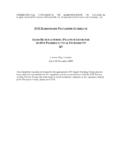
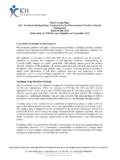
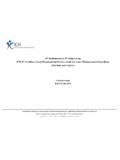
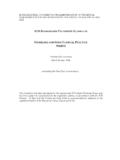
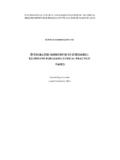
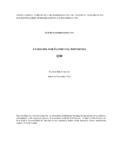
![[ICH E2F] [EXAMPLE DSUR – PHASE III …](/cache/preview/1/3/5/f/e/1/c/f/thumb-135fe1cf2cdb82799c462ad0ea089c48.jpg)
